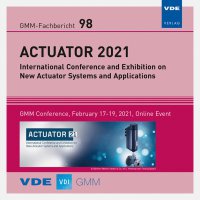Energy Harvesting in and on the Human Body
Conference: ACTUATOR - International Conference and Exhibition on New Actuator Systems and Applications 2021
02/17/2021 - 02/19/2021 at Online
Proceedings: GMM-Fb. 98: ACTUATOR 2021
Pages: 4Language: englishTyp: PDF
Authors:
Scheidl, Ailinn; Pott, Peter P. (Institut für Medizingerätetechnik, Universität Stuttgart, Stuttgart, Germany)
Abstract:
Energy harvesting could make it possible to replace batteries of active electronic implants or at least extend the lifespan of the implant, which primarily depends on the capacity of the batteries used. This paper provides an overview of current energy harvesting modalities for medical devices. For each modality, energy harvesting systems are analysed in terms of provided power, size, and location (wearable/implanted). To allow easy comparison the available electrical power was normalized to the largest surface of the devices. During the research 42 energy harvesting systems have been identified. For wearable devices, a power range of 0,43 nW/cm2 up to 1,2 mW/cm2 can be expected. For implanted devices 26,76 nW/cm2 up to 39,5 mW/cm2. The provided power of wearable and implantable systems would usually be sufficient to operate a pacemaker, for example. Most devices are extended in only two dimensions, thus the power-to-surface-ratio is valid. For wide use in medical devices, the systems still need to be adapted, particularly in terms of reliability, size, and biocompatibility.


